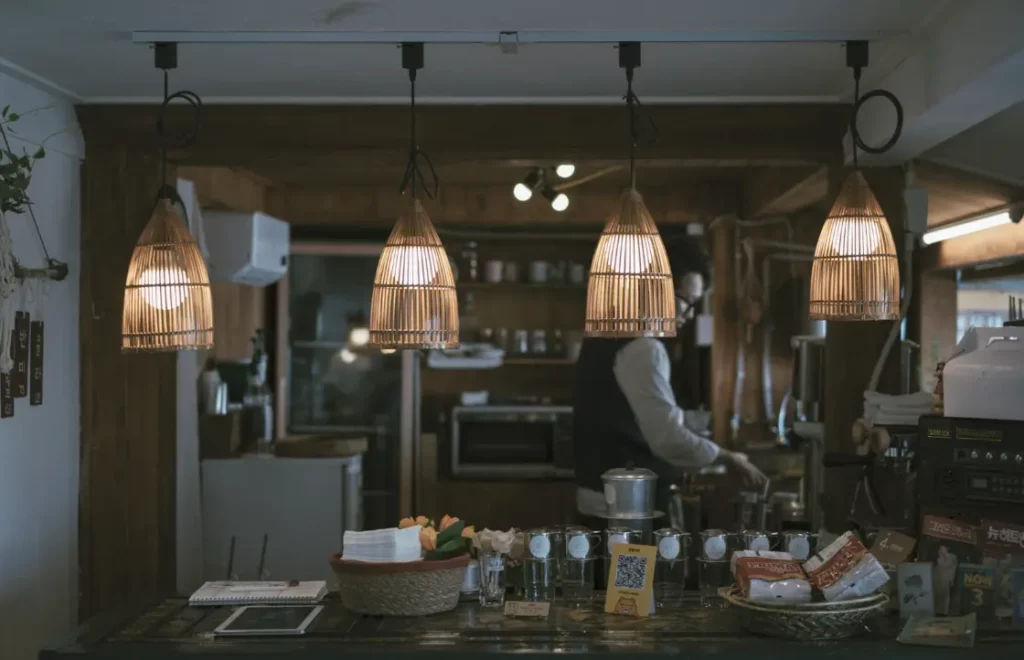The kitchen is often the heart of any home, where delicious meals are prepared and cherished moments are shared. To enhance the functionality and aesthetics of this vital space, it’s crucial to have adequate kitchen lighting. One increasingly popular option is kitchen pendant lighting. In this comprehensive guide, we’ll delve into the world of kitchen pendant lights, exploring their benefits, design considerations, installation tips, and much more. Whether you’re looking to update your kitchen lighting or starting from scratch, this article will shed light on everything you need to know about kitchen pendant lighting.
Understanding Kitchen Lighting

Before we dive into the specifics of kitchen pendant lighting, let’s briefly discuss the importance of kitchen lighting in general. Proper kitchen lighting serves multiple purposes beyond just illuminating the room. It can enhance safety, create a welcoming atmosphere, and add style to your kitchen’s decor.
Kitchen lighting typically falls into three categories:
- Ambient Lighting: This provides overall illumination for the entire kitchen. It can come from fixtures like ceiling-mounted lights or recessed lighting.
- Task Lighting: Task lighting is focused on specific areas where you perform tasks, such as chopping vegetables or reading recipes. Under-cabinet lighting and pendant lights often serve as task lighting.
- Accent Lighting: This type of lighting adds drama and dimension to your kitchen by highlighting certain features or decorative elements, like artwork or architectural details.
Kitchen Pendant Lighting: A Stylish and Functional Choice
The lighting, also known as kitchen pendant lights or simply “kitchen pendants,” has gained immense popularity in recent years. These fixtures hang from the ceiling and offer both practical illumination and a stylish design element.
Benefits of Kitchen Pendant Lighting
Kitchen pendant lighting is more than just a decorative element; it offers numerous practical benefits that can enhance your culinary space. Here are some of the key advantages:
- Focused Task Lighting: Kitchen pendant lights are designed to provide focused illumination on specific areas, such as kitchen islands, countertops, or dining tables. This targeted lighting is especially beneficial for tasks like food preparation, cooking, and reading recipes. It eliminates shadows and ensures you have a well-lit workspace, making these activities easier and safer.
- Aesthetic Appeal: Pendant lights come in a wide range of styles, shapes, and finishes, allowing you to customize your kitchen’s aesthetic. Whether you prefer a sleek and modern look or a more traditional and ornate design, there’s a pendant light to match your taste. These fixtures can serve as statement pieces, adding a touch of elegance and personality to your kitchen’s decor.
- Space-Saving Design: In smaller kitchens where space is at a premium, pendant lights offer a space-saving lighting solution. Unlike bulky chandeliers or large ceiling fixtures, pendant lights hang from the ceiling, taking up minimal space while still providing ample lighting. This design makes them an excellent choice for kitchens with low ceilings or limited room for overhead fixtures.
- Versatility: Kitchen pendant lights are incredibly versatile. They can be used in various areas of your kitchen, from above islands and peninsulas to over dining tables and breakfast bars. This adaptability allows you to create distinct zones in your kitchen, each with its own unique lighting style.
- Dimming Capabilities: Many pendant lights are compatible with dimmer switches, giving you control over the intensity of the light. This flexibility allows you to create different atmospheres in your kitchen, whether you want bright, focused lighting for meal preparation or a softer, more relaxed ambiance for dining and entertaining.
- Visual Balance: Pendant lights can help balance the visual proportions of your kitchen. When placed correctly, they can add a sense of scale and proportion to the room, particularly when hung above an expansive kitchen island or a large dining table. This balance contributes to a harmonious and well-designed space.
- Highlighting Design Elements: Beyond their practical function, pendant lights can also serve as accent pieces. They can draw attention to specific design elements in your kitchen, such as a beautiful countertop, a decorative backsplash, or a unique piece of kitchen furniture. By strategically placing pendant lights, you can showcase these features and create visual interest.
- Customization: Many pendant lights offer customization options, allowing you to choose the size, shape, color, and material that best suits your kitchen’s design. This customization ensures that your pendant lights seamlessly integrate into your overall decor scheme.
- Easy Installation: Pendant lights are relatively easy to install, especially if you already have the necessary electrical wiring and ceiling junction boxes in place. While it’s essential to follow safety guidelines, many homeowners can handle the installation themselves or with the help of a professional electrician.
Design Considerations for Kitchen Pendant Lighting
When selecting kitchen pendant lights, it’s essential to consider various design elements to ensure they complement your kitchen’s overall style and functionality:
- Size and Scale: The size of your pendant lights should be proportionate to the size of your kitchen and the surface they’ll be illuminating. Smaller pendants work well over a kitchen island, while larger fixtures may suit a dining area.
- Height and Placement: Pendant lights should be hung at an appropriate height to avoid obstructing views and ensure optimal illumination. Generally, they should hang about 30 to 36 inches above the surface they’re lighting.
- Style and Finish: Choose pendant lights that align with your kitchen’s design style. Consider the finish, whether it’s brushed nickel, matte black, or glass, and ensure it complements other fixtures and hardware in your kitchen.
- Bulb Type: Select the appropriate bulb type, such as LED or incandescent, based on your lighting needs and energy efficiency preferences.
- Number of Pendants: The number of pendants you choose depends on the size of your kitchen and the desired aesthetic. A single pendant can make a statement, while a cluster of pendants can provide balanced illumination.
Installation Tips for Kitchen Pendant Lighting
Proper installation is crucial to ensure your kitchen pendant lights look and function as intended. Here are some installation tips to keep in mind:
- Consult a Professional: If you’re unsure about electrical work or hanging fixtures, it’s best to hire a professional electrician to install your pendant lights safely.
- Consider Wiring: Ensure that your kitchen has the necessary electrical wiring and junction boxes to support pendant light installation. If not, you may need to make modifications.
- Measure Carefully: Measure the height at which you want to hang your pendant lights and mark the spots accurately. Use a level to ensure they hang straight.
- Use Appropriate Hardware: Use the right hardware, including anchors and support hooks, to secure the pendant lights to the ceiling.
- Check Regulations: Familiarize yourself with local building codes and regulations regarding electrical work and lighting installation to ensure compliance.
Maintenance and Cleaning

To keep your kitchen pendant lighting in pristine condition, regular maintenance and cleaning are essential:
- Dust Regularly: Dust and wipe down your pendant lights periodically to prevent a buildup of dirt and grime.
- Clean Glass Shades: If your pendant lights have glass shades, clean them with a gentle glass cleaner to maintain their clarity and shine.
- Replace Bulbs: Replace bulbs as needed to maintain optimal brightness and energy efficiency.
Final Thought
Lighting plays a pivotal role in transforming your kitchen into a welcoming, efficient, and stylish space. Kitchen pendant lighting, with its versatility and aesthetic appeal, is a fantastic choice to achieve these goals. Whether you’re aiming to create a cozy atmosphere for family dinners or a well-lit workspace for culinary adventures, pendant lights can be tailored to your needs.
